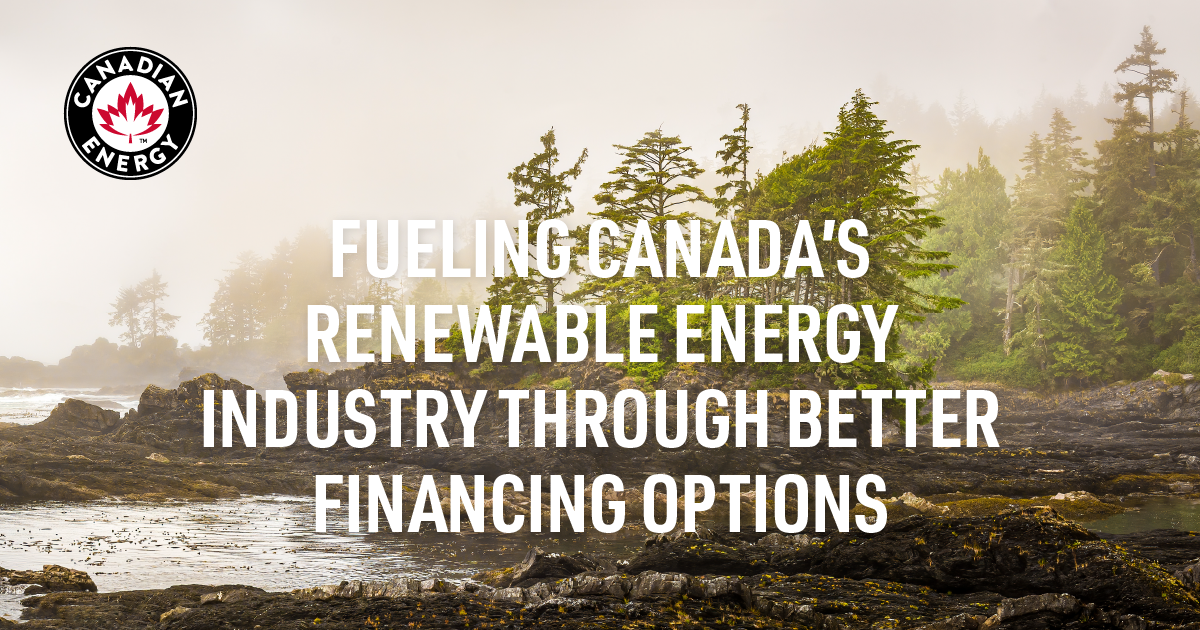Fueling Canada’s Renewable Energy Industry Through Better Financing Options

Renewable energy markets are flourishing across the globe as more and more residential and commercial users understand the financial and environmental value of reducing their reliance on traditional energy sources. In Canada, however, a progressing wide-scale adoption of renewable energy technologies is currently being halted by a lack of access to effective payment options.
“When you look at today's most advanced adopters of renewable energy – such as the United States, China, and Germany – the reason they've had such success is because end users have access to financing options, whether it's a power purchase agreement, leasing arrangement, debt construction financing, or additional approaches,” explains Ryan Magee, Renewable Program General Manager with Canadian Energy. “In Canada, though, it can be difficult to afford these technologies, both as a residential end user or business owner, without a large up-front investment or even going into debt.”
Canadians aren't completely on their own when it comes to making the solar energy switch. Securing a loan from a major bank is an option, which in the case of individual residents can provide 70 per cent of their total renewable energy investment. The drawback, however, is that this option still leaves average Canadians on the hook for the remaining 30 per cent, which makes some of the more advanced solar technologies unaffordable.
Businesses have a little more leeway with Canada's banks. Here again, however, there are disadvantages to pursuing the bank loan option.
“Commercial energy users can borrow the entire amount from a bank, but that money is in the form of a loan. That means you owe something, and it will show as an operating debt,” says Magee, adding, “The problem with that is when it comes to refinancing your business, buying equipment, hiring people, or expanding, having that debt on the books diminishes your ability to borrow additional funds.”
Without viable – and affordable – financing options for Canadians, it falls on home-grown renewable energy companies to bridge the gap. For Canadian Energy's part, it has created a financing strategy that bypasses banks and makes the investment in solar energy technologies more reasonable to their clients' bottom line.
“Not a lot people like to use the banking approach, so we developed a financial model that removes 100 per cent of the upfront cost for end users by covering the entire cost of the job. At the same time, since our plan is in the form of a lease, our commercial clients' balance sheets will show their investment as an operating expense.,” Explains Magee.
Giving businesses the option to acquire solar technologies in the form of a lease also gives them the ability to set their monthly payments at a similar level as their current hydro bill. This makes the transition much more feasible and allows them to write off those operating expenses on a month-to-month basis.
Residential clients aren't privy to the same write-off benefits. Still, as their arrangements with Canadian Energy are also in the form of the lease, they too have the ability to borrow up to 100 per cent of the total cost.
Emerging financing models like these presented by Canadian Energy are important to Canada's renewable energy industry as a whole going forward – especially in a country where rising hydro costs are putting residents and business owners in a pinch. “The important part is making Canadians as well as traditionally risk-averse banks more aware of their renewable energy options so that demand leads to better financing methods becoming available,” says Magee. “There's still a lot of education that needs to be done to make Canadians aware of the impact of battery and energy storage, and what that really means in terms of future power generation and how it all fits into our existing energy infrastructure.”
No doubt, the stats themselves make a strong argument for an investment in solar technology investments. According to Canadian Energy's research, Ontario businesses using a standard net metering system with battery backup can expect to receive a return on their investment within 5 to 7 years.
“We find that once our clients realize what these technologies are capable of doing, and how they compare to today's hydro costs, it's an easy call to make. They get it and they want it,” concludes Magee.
Ryan Magee is the Renewable Program General Manager with Canadian Energy. For more information, visit www.cdnrg.com.
